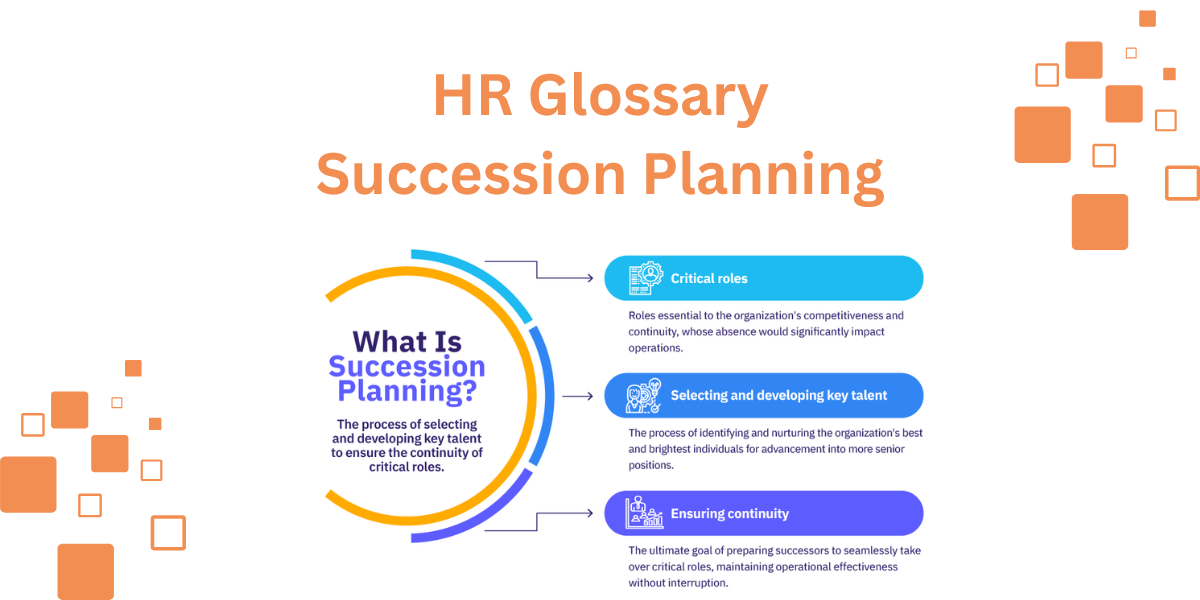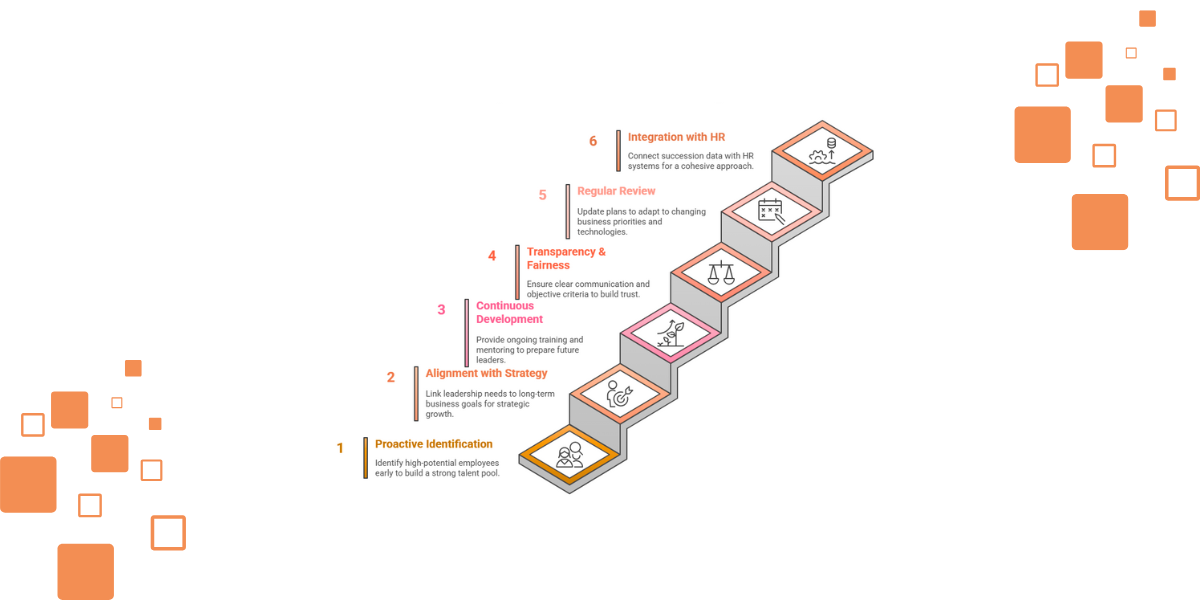Succession Planning: Preparing Future Leaders For Organizational Continuity
Introduction
Did you know that companies with a formal succession plan are 41% more likely to have a strong leadership pipeline? That's a huge competitive advantage, and it’s no longer a luxury. In today's fast-paced business world, an unexpected departure or retirement can create a leadership void. This threatens continuity and stability.
Succession planning isn't just a buzzword; it's a strategic necessity. It's about proactively preparing your team for the future. This blog post will walk you through everything you need to know about succession planning. First, we'll start with a clear definition. Then, we'll dive into its core principles. We will also look at practical examples.
We will also share some tips to help you get the most out of your plan and define some key terms. Finally, we'll answer your most pressing questions. So, let’s get started, prepare your organization, and see what happens next.

Definition: What Is Succession Planning?
Succession planning is the structured process of identifying and developing internal talent. These people fill key leadership and critical roles in the future. It ensures that an organization maintains smooth operations when senior employees retire, leave, or change roles.
A clear plan reduces disruption. It protects institutional knowledge. It also strengthens leadership pipelines. For example, a financial firm may prepare mid-level managers to step into executive positions. This brings about stability in terms of leadership changes. This is a proactive measure of eliminating the scramble to outsource.
It is noted that external hiring is quite costly and time-consuming. It is about in-house construction. You are empowering your people, you are also establishing your future, and at the same time, your company. Consider it to be an insurance policy for your leadership.
The Principles Of Succession Planning
Proactive Identification
Don't wait for a crisis to start looking for talent. Instead, spot high-potential employees (HiPos) early. This builds a strong talent pool. It means looking beyond current performance and assessing future potential.
Alignment With Business Strategy
Your succession plan isn't a standalone Human Resources (HR) exercise. It must link future leadership needs to the company’s long-term goals. For instance, if your company plans to expand into new markets, your plan should identify leaders with the skills for that expansion.
Continuous Development
Talent development is something that happens all the time. Train, mentor, and give rotational assignments to prepare successors. This isn't just a one-time thing. It takes a long-term commitment.
Transparency And Fairness
Use objective criteria and clear communication to avoid bias. Employees should understand why certain individuals are being developed. This builds trust. It also encourages buy-in from your entire team.
Regular Review
The business landscape is always changing. Therefore, you must update your plans as business priorities, technologies, and employee performance change. A static plan is a useless plan.
Integration With HR Systems
Connect succession data with performance management and learning systems. This creates a cohesive, data-driven approach. Your HR technology should be working for you, not against you.

Practical Examples Of Succession Planning In Action
Executive Leadership Transitions
This is a perfect example. You train vice presidents to be leaders in the C-suite. This makes sure that the transition goes smoothly when the Chief Executive Officer (CEO) or Chief Financial Officer (CFO) leaves.
Critical Role Backup
Not all critical roles are C-suite positions. It's also about ensuring technical experts have trained deputies. This helps to maintain operations. What happens if your top software architect leaves? Your succession plan has the answer.
Emergency Planning
Sometimes, things happen without warning. Your plan should include immediate successors. They should be ready in case of sudden departures. This minimizes risk and keeps the business running smoothly.
Sample Succession Planning Matrix
Here’s an example of a succession planning matrix that shows who is ready now, who will be ready in 1-2 years, and who may be ready in 3-5 years.

This matrix helps visualize readiness levels and development timelines. It’s a simple, powerful tool. It shows you where your talent gaps are.
Best Practices To Improve The Value Of Your Succession Plan.
- Map Critical Roles: Determine business continuity positions. As an example, the Chief Financial Officer (CFO), the Head of Information Technology (IT), and the Plant Manager.
- Establish Clear Criteria: Determine performance and possible standards. As an example, leadership skills and development indicators.
- Provide Development Paths: Have job rotation and mentoring. As an example, interdepartmental skills training.
- Encourage Open Dialogue: Brief career objective with high-potential staff. As an illustration, conduct career planning seminars annually.
- Review Regularly: Re-evaluate talent pools on 6-12-month basis. Post-restructuring of the organization.
- Use Technology: Use a Human Resource Information System (HRIS) or talent management programs. As an illustration, an automated dashboard displays indicating levels of readiness.
- Protect Confidentiality: Role-based access controls on the sensitive data of talents. Reduce exposure to HR and executives.
Some Important Terms Related to Succession Planning
- Talent Pipeline: A group of employees undergoing grooming.
- Leadership Development: Training in the development of management and strategy.
- Critical Roles: These are positions that are critical in day-to-day operations and strategic objectives.
- High-Potential Employee (HiPo): An employee who is identified to be able to accelerate their progress.
- Knowledge Transfer: The transfer of institutional knowledge as a measure to maintain expertise.
- Emergency succession: It means quickly finding a new employee to take the place of one who has left.
TL;DR
Succession planning makes your business ready for change. It protects you against sudden leadership gaps. Begin finding the high-potential employees early. Next, connect their growth with your long-term goals. Mentor, train, and job rotate to build their skills. Re-check your plan and adapt to changes in needs.
Simple readiness table to watch the levels of talent and show gaps. Add Human Resources (HR) tools to work with data and make everything clear. This plan cuts costly outside hiring and is important to keep key skills. When there is a good plan, you keep things running, prepare future leaders, and keep the company together when key people take a new path.
Frequently Asked Questions About Succession Planning
Why Is Succession Planning Important?
It makes sure that business continuity, minimizing risk, and developing future leaders do not disrupt business.
How Often Should A Succession Plan Be Reviewed?
At least once a year. It should also be reviewed during the times when there are major changes in the organization or market.
Who Should Be Involved In Succession Planning?
The Human Resources (HR) agents, senior leadership, and heads of various departments normally work together to identify and nurture successors.
Can Succession Planning Apply To All Roles?
Yes. Although it is paramount to the executives, it assists the technical experts and other important positions.
What Tools Help Manage Succession Planning?
Talent management systems, Human Resource Information Systems (HRIS), and special succession planning software enhance tracking of data and development plans.
How Does Succession Planning Support Business Continuity?
It guarantees pipelines to the leaders, ensures knowledge within an organization, and gives immediate backup in case of unforeseen exits.
Explore Succession Planning Software Solutions
Are you now ready to make your succession planning even more? The need to automate succession tracking, development plans, and come up with reports on readiness can be done on integrated HR platforms. Making a correct choice of technology is an investment in the long-term health and stability of your business.

.png)


























